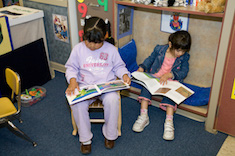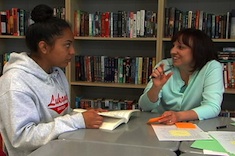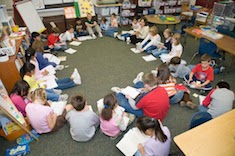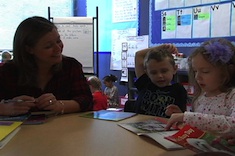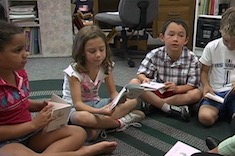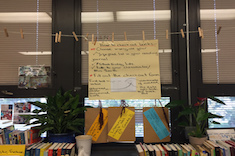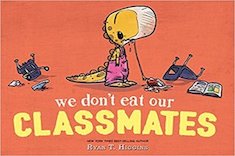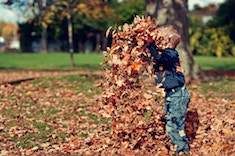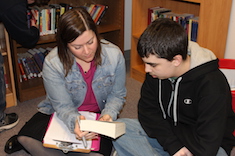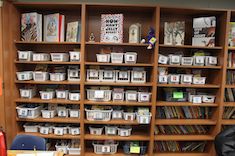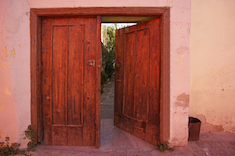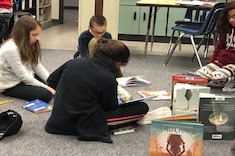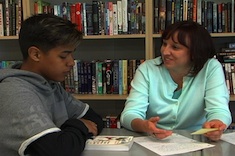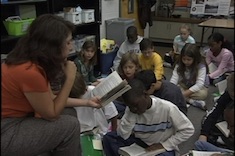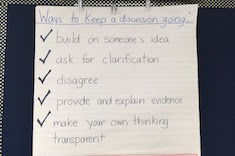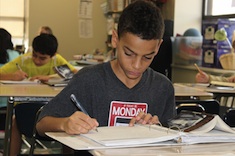Articles
Here is where you’ll find all the latest print features from our contributors. If you’d like to browse specifically by grade level, topic, or contributor, you can use the links in the right sidebar.
Latest Content
Building Routines
Bitsy Parks teaches the foundations of first-grade classroom life through minilessons early in the year.
Confusing Children
Ruth Ayres explains why we can’t assume children who have experienced trauma understand the foundations and routines of how school works
Avoiding Flat Tires
Jen Schwanke gets berated by a tire shop repair guy for ignoring routine maintenance needs on her bike. That gets her thinking about what needs routine maintenance in elementary classrooms.
Reader Response as an Entry to Conferring
Christy Rush-Levine integrates reading responses into her preparation for reading conferences, and then uses the responses as a tool to build goals and insights within the conference.
What Does It Mean to Read?
“I read 35 pages!” An elated student deflates Bitsy Parks in her first-grade classroom. By mid-fall she is alarmed at students’ responses to their reading in the whole-group share—they are all about quantity, with no thinking or reflection. She uses modeling and careful questioning to foster more thoughtful reader response.
Annotating While Reading
Franki Sibberson finds teaching students to annotate while reading is one of the best ways to promote ongoing reflective response in her fifth-grade classroom. She shares how she starts teaching annotation skills early in the year.
Levels and What’s Appropriate
“How do you know what level they have selected?” a visitor asks Bitsy Parks as she observes during a first-grade independent reading period. “I don’t,” Bitsy responds, and explains why it is a beautiful thing.
Three Challenges for the 40 Book Challenge
Matt Renwick encourages you to ask a few critical questions before you adopt the 40-Book Challenge or any other activity with a number for a goal you’re going to be tied to all year long in your classroom.
Guided Reading Run Amok
Shari Frost helps a teacher who has guided reading groups that have run amok, and discovers that the real culprit is a lack of time for reading and writing in the literacy block.
Organizing for Middle School
Tara Smith covers all the basics of how to get organized in middle school for the first days of literacy workshops.
Read Alouds to Start the Year in First Grade
Bitsy Parks selects read alouds for the first weeks of school for many different purposes, from building community to helping her first graders navigate the classroom library.
Getting to Know Each Other Through the Work
Mark Levine explains why he dives right into work in his middle school classroom, rather than getting-to-know-you activities. And through the work, a community is born.
Doing the Writing in a Unit
One way to keep your instruction fresh in a required writing unit is to take on the tasks and topics yourself. Dana Murphy finds completing the assignments herself is well worth her time, and gives her a treasure trove of notebook entries to use in her conferring.
Fall Fluster
Bitsy Parks is stressed from trying to “cover” all the lessons in the first required reading unit of the year with her first graders. She takes a deep breath and decides to integrate more of her own lessons into her instruction.
Writing on Someone Else’s Topic
Shari Frost finds she has to do required, on-demand writing for a new job, and in the process develops a new appreciation for how teachers struggle with rigid reading and writing programs.
How to Get Books Off Shelves
Christy Rush-Levine writes about the push and pull of wanting to put books into students’ hands, and needing at the same time to give them room to explore the classroom library.
Keeping the Classroom Library Current
Franki Sibberson explains how she watches students closely and adjusts her library based on what she sees all year long.
And This Makes Me Think
Dana Murphy considers how teachers can make writing workshop routines more cozy and like writing at home.
Wounded Warriors: Trauma and Literacy Routines
Ruth Ayres explains which workshop routines are essential for children who come to school bearing trauma.
When One Door Closes
Gretchen Schroeder finds new routines in her high school workshop means letting go of old expectations.
Invitations vs. Accountability
It’s not an invitation if students are required to accept it. Franki Sibberson explains how engagement depends upon true choice and lots of options in her fifth-grade classroom.
Seeking Personal Relevance
Christy Rush-Levine has to figure out how to engage a class of students that is compliant and dutiful, but shows little passion for reading and writing.
The Year’s First Read Aloud
From length to heart, Tara Smith provides seven criteria for selecting the first read aloud of the year that can engage students right from the start.
Flipping Negative Teacher Emotions
Gretchen Schroeder struggles to understand the meaning and value of her teaching when two former students overdose and die, another pleads guilty to murder, and yet another is arrested for domestic violence. She also looks at the corrosive effects of both apathy and envy. The result is a deep reflection on how teachers can move beyond sadness and other difficult emotions.
Three-Word Meditation
Mark Levine depends upon a simple meditation strategy during the required moment of silence in his classroom to begin each day with a calm sense of purpose.
Recharging with My Tribe
Stella Villalba uses the inquiry and reflection skills she has developed as a teacher to pore through her planner and journal for clues to why her energy flagged in the winter and spring, and what she can do differently next year.
Getting to the Heart of Theme
Tara Smith shares many strategies for helping her sixth graders get to the heart of understanding themes in literature.
Splashing Around to Find Themes
Christy Rush-Levine moves from emphasizing theme to teaching strategies for understanding text, and finds it’s a much better way to get her eighth graders to grapple with theme in natural, organic ways.
Writing Routines: Drafting Autonomy
Justin Stygles questions his conferring routine during writing workshops, and the value of interrupting students early in the drafting process.
Refugees: A Children’s Booklist
There is probably no population more misunderstood or vilified than refugees. Stella Villalba shares a booklist to help young students understand the refugee's plight and experiences.
Browse Content By
Type
Category
- Assessment Tools
- Big Fresh Archives
- Booklists
- Choice Numeracy
- Classroom Design
- Common Core
- Community Building
- Conferring
- Content Literacy
- Digital Literacy
- English Language Learners
- Equity
- Family Relations
- Free Samples
- Guiding Groups
- Leadership
- Literacy Coaches
- Mentor Texts
- Minilessons
- New Teacher Mentors
- Podcasts
- Poetry
- Quote Collections
- Reading Strategies
- Self Care
- Struggling and Striving Learners
- Talking and Listening
- Teacher Study Groups
- Teaching Reading
- Teaching Writing
- Word Study and Vocabulary
Author
- Melissa Quimby
- Nawal Qarooni
- Gwen Blumberg
- Julie Cox
- The Lead Learners
- Hannah Tills
- Josie Stewart
- Ruth Metcalfe
- Mallory Messenger
- Becca Burk
- Jodie Bailey
- Vivian Chen
- Mary Brower
- Tiffany Abbott Fuller
- Stephanie Affinito
- Ruth Ayres
- Leigh Anne Eck
- Heather Fisher
- Shari Frost
- Julie Johnson
- Suzy Kaback
- Gigi McAllister
- Shirl McPhillips
- Melanie Meehan
- Cathy Mere
- Debbie Miller
- Tara Barnett and Kate Mills
- Tammy Mulligan
- Dana Murphy
- Bitsy Parks
- David Pittman
- Brenda Power
- Heather Rader
- Matt Renwick
- Mandy Robek
- Christy Rush-Levine
- Gretchen Schroeder
- Jen Schwanke
- Brian Sepe
- Katherine Sokolowski
- Stella Villalba
- Jennifer Vincent
Grade Level
Choice Literacy Membership
Articles
Get full access to all Choice Literacy article content
Videos
Get full access to all Choice Literacy video content
Courses
Access Choice Literacy course curriculum and training

